Looking back: aMTB’s arrival at the Dunbar Summer Series
The long road to, and bright future of adaptive downhill mountain biking
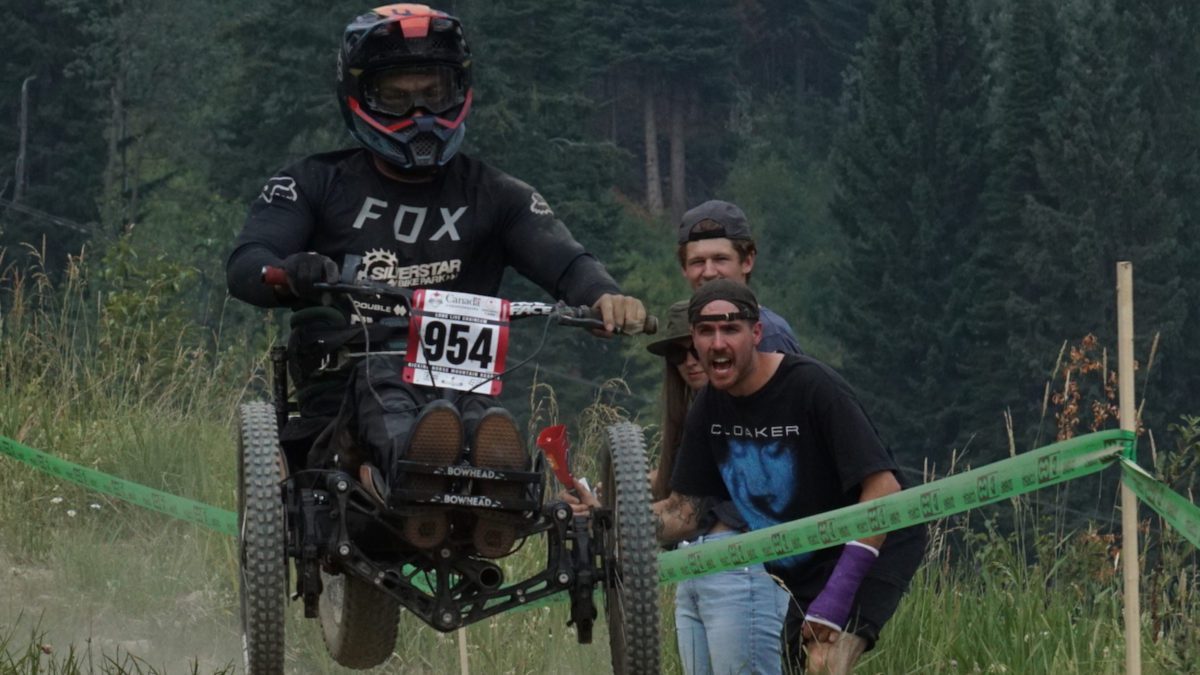 Photo by:
Dunbar Summer Series
Photo by:
Dunbar Summer Series
When an adaptive downhill category was announced for last year’s Dunbar Summer Series, some riders weren’t sure what to expect. What exactly was aMTB DH? For many of us that had no experience seeing an adaptive bike in person, the first question was how riders could get down the notoriously difficult tracks? By the end of the first race those questions were answered and aMTB had a whole new roster of fans. Since then, aMTB’s quickly expanded with more races adding aMTB categories, downhill and otherwise.
As Dunbar Summer Series rolls through 2022, we’re looking back at the surprise hit of 2021. How it happened, what made it so successful and, most importantly, what the riders themselves thought of the experience.

aMTB comes to Dunbar: shattering expectations
From a sport that didn’t really exist a few years ago, aMTB burst onto the scene in dramatic fashion this summer at the Dunbar Summer Series. Despite being the first aMTB race series to be run as part of an existing series, it wasn’t exactly dipping toes in to test the waters. It was three Canada Cup-level downhill races in nine days, on some of the hardest terrain imaginable. The impact was immediate, for those between the tape and those watching from outside.
“Coming from a racing background, this changes everything,” says Cole Bernier. “Finally having a platform where we can push ourselves to our limit and be doing it against some of our best friends is truly a game changer.” Even for a rider that’s been on aMTBs for a while, integration into the Canada Cup scene came with some surprises. “Racing the aMTB Series changed my expectations more than anything. When we started to work on getting the adaptive class integrated into the Dunbar Series, I wasn’t really sure what to expect. After testing the courses, and finally getting to race them, my expectations were quickly blown out of the water. This sport is here to stay!”
RELATED: Get to know aMTB DH: Cole Bernier
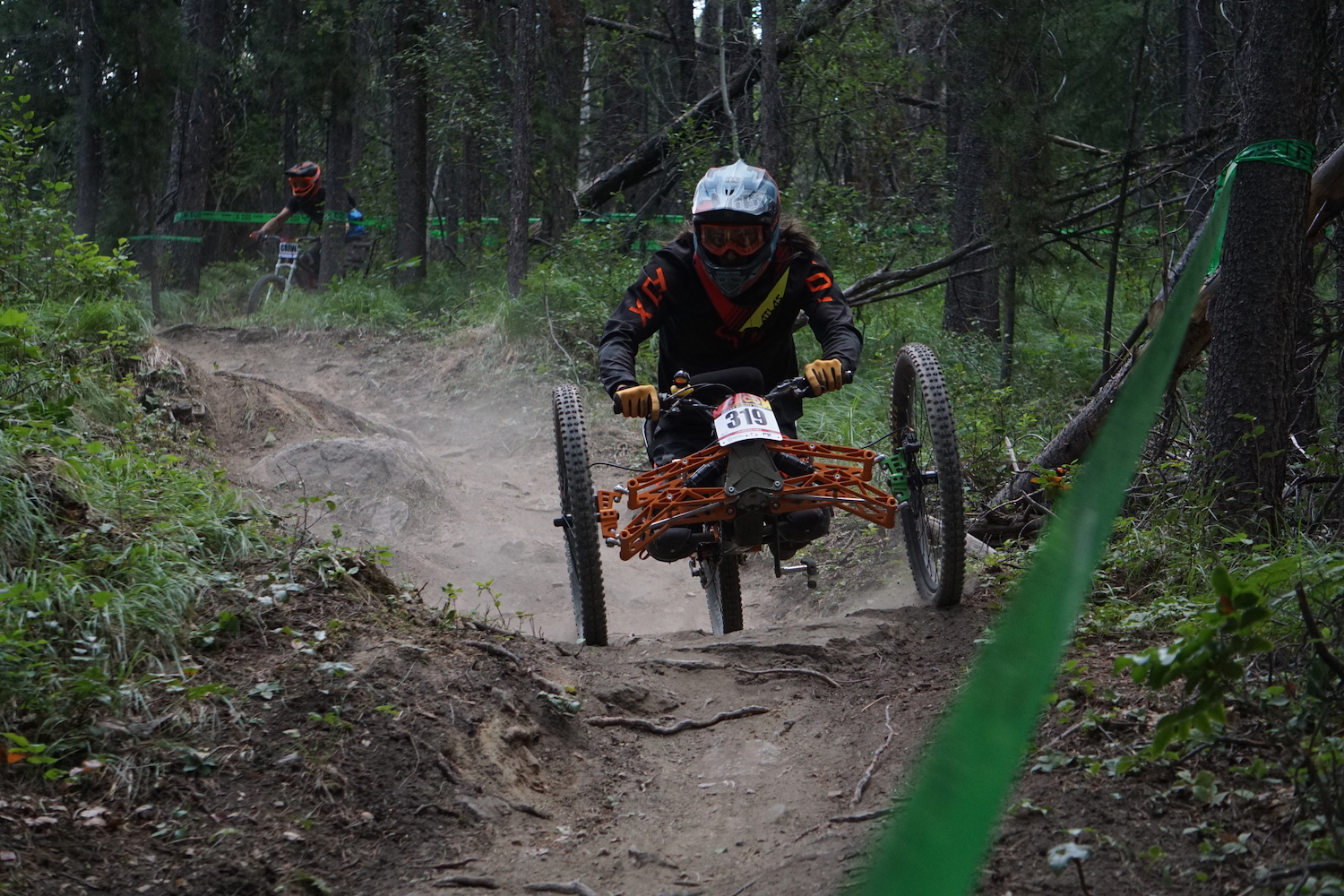
For Ethan Krueger, another experienced aMTB athlete coming into last year’s events, having a series led to a shift in perspective.
“Competing in the Dunbar Summer Series changed the way I have viewed adaptive mountain biking as a rider,” Krueger recalls. “Before, adaptive mountain biking was pretty much just that.. nothing more, nothing less. There were the odd one-off events that might hold an adaptive class but that’s about it. By providing an adaptive category in all the series races, it gave legitimacy to adaptive riders and put them on the same stage as any able-bodied rider. But more than that it started the conversation and momentum to push the adaptive category in downhill racing forward in the future.”
RELATED: Get to know aMTB DH: Ethan Krueger
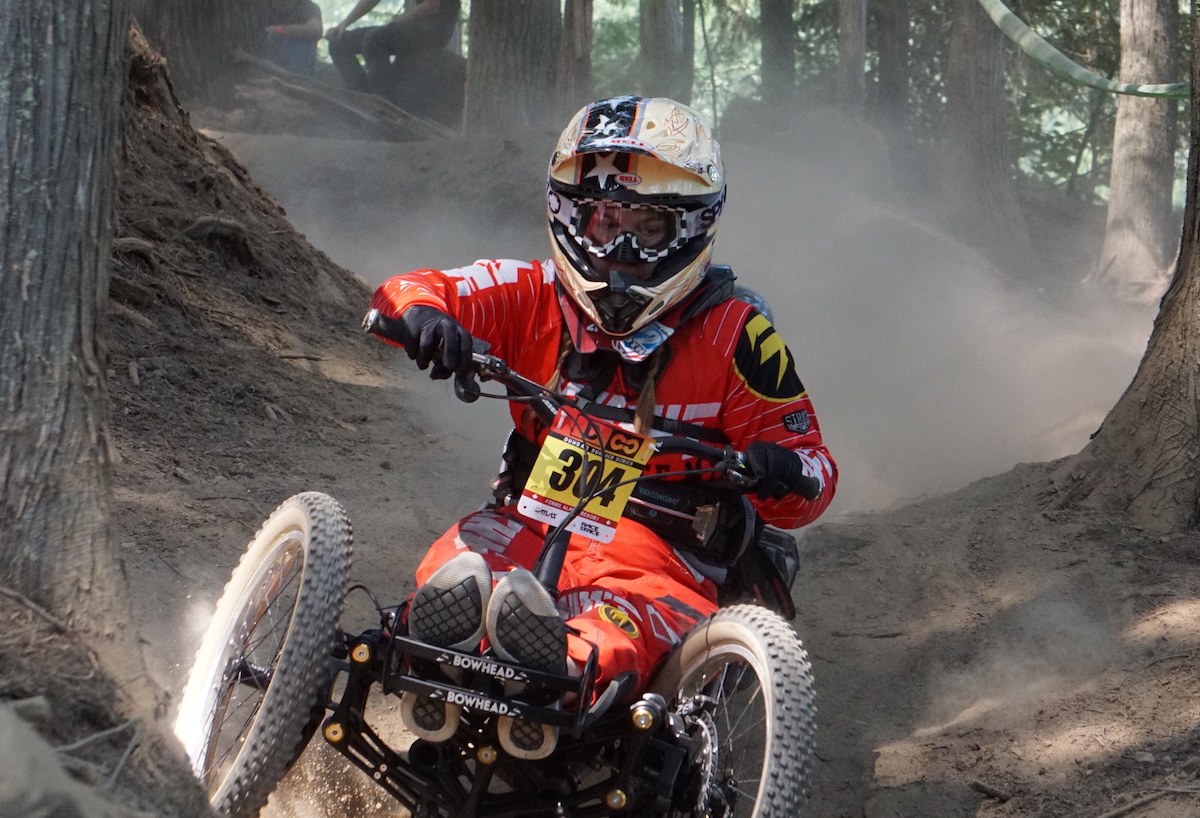
aMTB outside the tape
The week-long series also opened doors outside of racing. Sierra Roth was new aMTB when Dunbar started in 2021, but still took on all three of the elite-level courses.
“aMTB opened my eyes up to the potential of the adventures I can still have,” says Roth. “I grew up in the mountains. I haven’t felt the kind of freedom I felt during the Series in over eight years. With my motocross background, I was reliving my childhood racing with the boys in the mountains!”
“This also sparked many discussions about women involved in adaptive mountain biking and how I can help support this,” added Roth, who was the only woman on course in the aMTB category in 2021. In the year since, Roth’s gone on to take her coaching certifications and help run aMTB clinics to help get other riders involved.
One unexpected event was, at the afterparty at Kicking Horse started to kick into gear, riders let other try out their bikes. This included Steve Smith’s mother, Tianna Smith, taking a ride in a Bowhead Reach. After seeing how much she enjoyed the bike, a group quietly worked behind the scenes to suprise Smith with her own Reach at the Steve Smith Memorial DH later that fall at Mount Washington so she could rip around her home Nanamio trails.
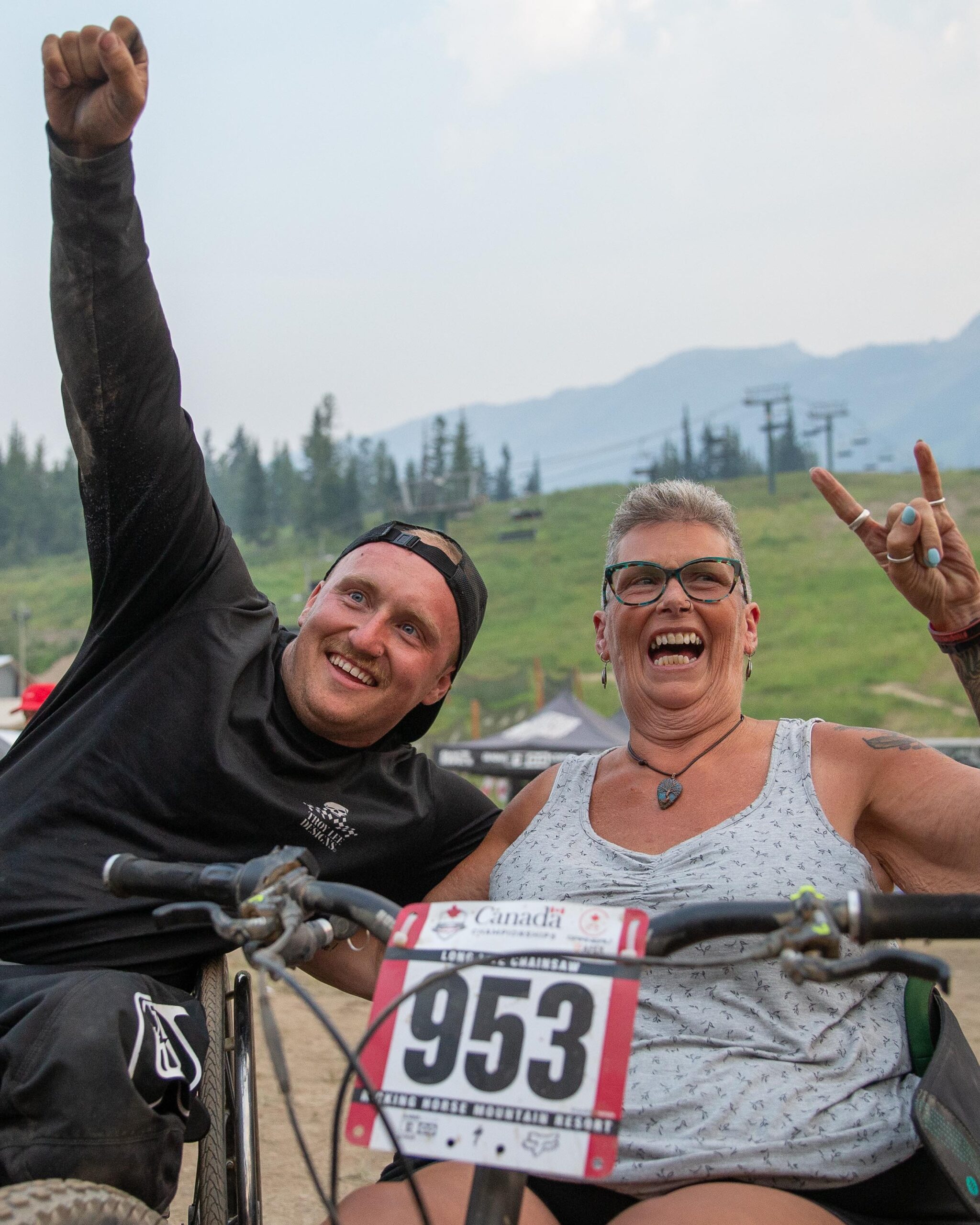
Finding community in competition
As mountain bikers, we often take it for granted that we can show up at a trailhead or lift line and see, well, other mountain bikers with similar experiences. Whether that’s cross country, trail or downhill riding, we can generally find someone with similar interests and bikes. For aMTB athletes, 2021 Dunbar Summer Series was the first time many of had been around a group of similar athletes. Having the adaptive category included in the series led to connections between riders of all types.
“The aspect of community really stood out to me at the Dunbar Summer Series. The energy in the pits between the riders (adaptive and non-adaptive) was so positive, everyone was there for the same love of mountain biking and pushing themselves to their limit,” Bernier recalles. “That is a motivating crowd to be around, and I loved every second of it.”
“It motivated me to really not identify with my disability as I was surrounded by numerous other athletes and we were coming together around a love of mountain biking, taking on the terrain together,” adds Dave Sagal. “The way the mountain biking community came to gather to create an inclusive environment made me look forward to more riding.”

Unlocked potential: where to from here?
Dunbar Summer Series is just the start. Every rider that I talked to had different visions for what they wanted to see happen after competing in the series.
“Moving forward, I hope my involvement sparks a new found interest in women coming to the series,” Roth said, adding “but also getting more women outside to experience the freedom I do every time I hop on my bike.”
“I’m looking forward to more people being able to experience the freedom and joy of being back on trails that weren’t open to them before,” said Sagal. “I’m really looking forward to more trail design with the adaptive bikes in mind. This will help encourage more involvement from all different categories of the adaptive community.”
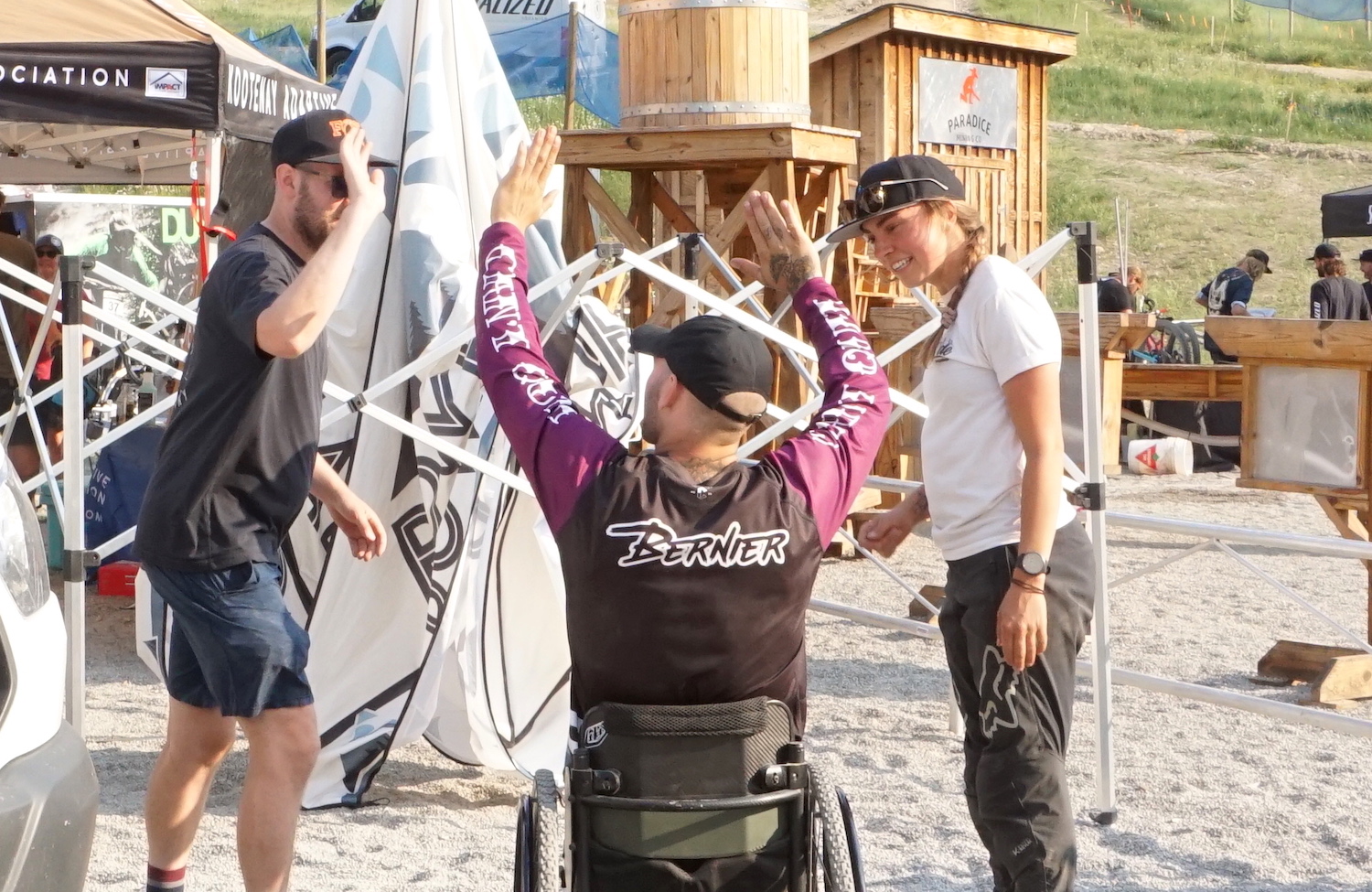
“For me personally, I would like to see the sport progress further and push adaptive categories into all levels and types of mountain bike competition,” Krueger adds. “But the ultimate goal would be to see adaptive mountain biking make it to the world stage. I’m very excited to see what the future holds for mountain biking.”
That future is arriving fast. Kootenay Adaptive Sport Association (KASA) ran clinics for riders and coaches, including a world’s-first women’s-only aMTB skills clinic in Squamish. There’s been more races around North America and Europe. Sea Otter Classic and Unbound Gravel included adaptive racing categories, as did BC Cup events and the Fernie Gravel Grind, more locally. Mike Reidiger, head of KASA, says the series is already being used as a resource as far away as Australia and Norway.

A shared future and the public result of years working behind the scenes
While adding an aMTB category is for adaptive athletes, Niall Pinder, a photographer involved in launching the category last year, says that everyone can benefit.
“Accessibility done right, no matter what it is, makes things better for everyone,” Pinder says. “Whether that’s adding a ride around for a blind drop or in daily life, it has a way of making things better, not worse.”
That applies to trails, even ones at the lift-accessed areas where the Dunbar Summer Series was held. Series organizer Stephen Exley was onboard immediately. “It didn’t even seem like it was a question, to be honest,” Reidiger recalls. “We’re used to hesitancy. Doors don’t really shut but that initial reluctance we’re used to just wasn’t there. That was awesome.”
Pinder says some resorts were initially apprehensive until the plans were explained fully. “Once resorts realized we didn’t want to make things easier – and that making a few changes could actually make their trails better, they were on board,”
For Exley, whose been organizing downhill races for over a decade, the benefits of including an aMTB were obvious.
“I was excited, mostly because these are just such a rad bunch of humans and bringing them into the Dunbar Summer Series would elevate the level of racing, both of racers and their bikes,” Exley explained, adding that his enthusiasm had a personal angle, too. “A smaller part of me was also stoked just for the puzzle of it all. The challenge of adding an entirely new category with its known and mostly unknown obstacles got my mind racing again. I thrive on that.”
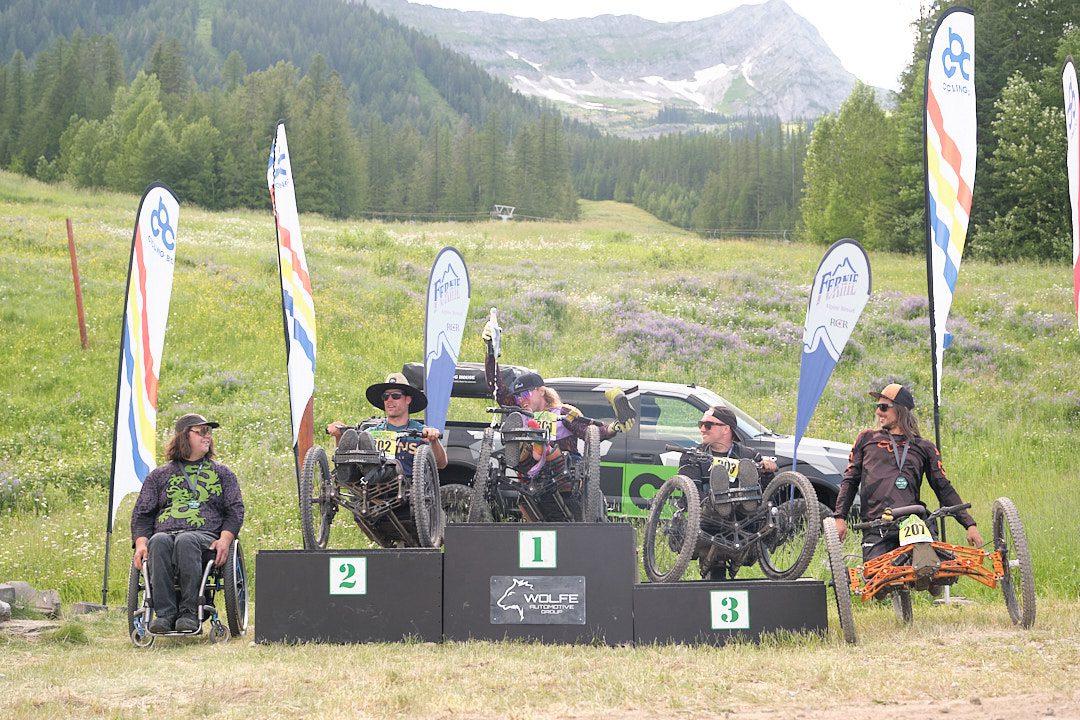
From the ground, up
All this growth doesn’t happen without a ton of work behind the scenes. In addition to the athletes, who have been huge drivers of the sports development, Pinder says Mike Reidiger of Kootenay Adaptive Sports Association has, and continues to be a tireless advocate for the fast-growing sport. Despite putting in what everyone else describes as massive amount of time and effort, Reideger stumbled into the world of aMTB almost by accident. After relocating to Nakusp, where he planned to spend his time renovating the families new howme, he applied to a position for a feasibility study. Four years later, aMTB racing is on the scene, and the home renovations are … ongoing.
While aMTB burst out of the gates near fully-formed at Dunbar, getting there took years of work from KASA and riders.
“A few years ago, I only knew a couple riders in B.C. that actually had their own bike. There was, and is still tons of work on the grassroots and development side,” syas Reidiger. “We had to start from the ground up.”
Having an established series to join helped make the final jump smoother for KASA. The pay-off is huge, for riders and KASA. Like the work that goes into it, the benefits extend well beyond one week of racing.

“Having the opportunity to join SE Racing made it easy, not having to rent our own expensive timing equipment or run registration,” Riediger adds. “We work the entire year on this. Coaching, camps, subsidizing programs, creating an instructor certification program. The Dunbar Series, and the attention it gets, provides a huge inroads to showcase all the work no one sees.”
As for starting with downhill, which can be a daunting first step into mountain bike racing even for those able-bodied mong us, both Pinder and Reidiger say athlete feedback drove the direction.
That speaks to the passion of the athletes involved. They’re not doing this halfway. They wanted a full dh series. As Niall Pinder put it, they’re the true hardcore riders.
“I think I like mountain biking, I think I’m pretty into the scene,” says Pinder. “But those guys and ladies, like, most of them hurt themselves doing this sport. And they’ve done so much work to get back on bikes. I don’t know if, in the same situation, I’d be able to work that hard to get back to racing.”
That passion is obvious watching aMTB racing. It’s also why the sports progression isn’t slowing down anytime soon.
